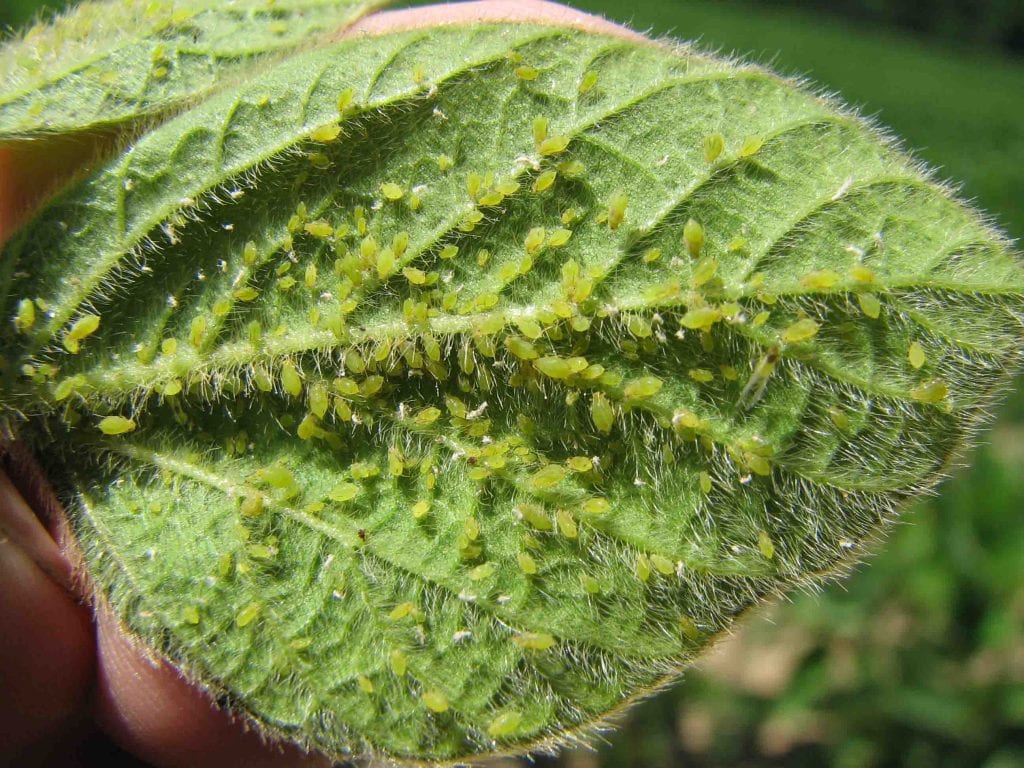Volume 19 Number 13
Contents
View from the Field
Western Bean Cutworm (Striacosta albicosta)
The Western bean cutworm moth flight has peaked at an average of 231 moths per trap statewide (The week of July 27). Some traps in Northern NY reached 1200 moths. This was the peak flight of the moth. This last week the average per trap statewide dropped to 106 moths per trap.
It is time to get out and scout your corn for small larvae and egg masses. The threshold is 5% of the plants have eggs laid on the leaves. This is an accumulated threshold. Therefore, if you found 3% one week and 4% the next the accumulated percentage would be 7% infestation. This would be over threshold and would need an insecticide application. If the larvae have entered the ears, then it is too late to spray. Note: this is only for corn grown for grain. There are no thresholds for silage corn.
Number of Moths Caught by Trap Location Map for the Week of July 27
Number of Moths Caught by Trap Location Map for the Week of July 27
Armyworm
There are reports of armyworms in sorghum-Sudan grass this last week in a few fields in eastern, western and northern NY. The infestation in eastern NY destroyed the field. There were several larvae per square foot. There were mixed sized larvae in the field. This means the smaller larvae would have continued to feed for a while. The larger larvae would have pupated. The farmer decided to spray the field to protect the cornfield next to the sorghum-Sudan grass. Armyworm can march from field to field.
Armyworm damage in sorghum-Sudan grass (photo by L. Davenport)
Armyworm damage in sorghum-Sudan grass (photo by L. Davenport)
Soybean Aphids (Aphis glycines)
There were reports of low to moderate levels of soybean aphids on soybeans. Remember that the 250 aphids/plant economic threshold is for between the R1 and R5 stage of soybean growth. After the R5 stage of growth, research has shown insecticide applications are not cost-effective.
Degree Days Base 50 from March 1, 2020 to Aug. 12, 2020
| Station Location |
(Base 50) March 1 |
| Canton | 1740 |
| Ceres | 1595 |
| Chazy | 1679 |
| Geneva | 1888 |
| Highland | 2105 |
| Ithaca | 1795 |
| Kinderhook | 2052 |
| Malone | 1606 |
| Massena | 1715 |
| Oriskany Falls | 1792 |
| Red Hook | 2060 |
| Versailles | 1775 |
| Watertown | 1733 |
Clipboard Checklist
Keith Waldron, NYS IPM
General
*Walk fields to check general field condition, weed, vertebrate and other issues
*Watch for crop maturity, stand assessments, weed escapes, nutrient deficiencies, lodging issues
Alfalfa:
*Evaluate established legume stands for approximate days until harvest
*Monitor potato leafhopper, foliar, systemic and crown rot diseases.
*Monitor new seedings for potato leafhopper, pythium blight, phytopthora root rot.
Small Grains:
*Monitor grain fields for growth stage, disease and lodging issues, grain maturity, harvest timing
*Record diseases present, location and types of weed escapes
Corn:
*Monitor for mid-season corn pests including European corn borer, corn rootworm, western bean cutworm, slugs, foliar diseases such as northern corn leaf blight and gray leaf spot, weed issues, nutrient deficiencies, vertebrate damage.
Soybeans:
*Monitor for soybean aphid, defoliators, foliar diseases, white mold, weed issues, vertebrate damage
Pastures:
*Check water sources, mend fences as needed.
*Check crop growth, clip pastures between grazing as needed
*Monitor for invasive species, plants harmful to livestock
*Review/Plan rotations
Storage:
* Check stored grain bins for temperature, moisture and signs of mold and insects. Aerate, core, transfer grain or treat as necessary
* Clean and disinfect empty storage bins in preparation for grain harvest
*Check forage allocation and anticipate feed program adjustments as forages from previous year are used up
*Mow around storage bins and facility to minimize pest hiding places
Dairy Cattle Barn Fly Management:
*Monitor animals and barn area for house fly, stable fly and other pest management needs including presence of rodents and birds.
*Check facilities for favorable fly breeding conditions: (organic matter + moisture): leaks in watering systems, roof gutters for leaks and potential overspill, drainage,
*Sanitation, sanitation, sanitation – clean animal resting areas, feed troughs, minimize source of moist organic matter i.e. fly breeding areas in barn and in adjacent animal loafing yard
* Continue fly monitoring: install “3X5″ index card fly speck monitoring cards throughout barn
*Use, replenish, replace fly management materials: sticky fly tapes/ribbons, insecticide baits, natural enemies (parasitoids), fly population monitoring (3 x 5) spot cards
*Consider purchase and release of Muscidifurax raptor and/or M. raptorellus natural enemies of house and stable fly pupae.
Dairy Cattle on Pasture:
*Monitor animals for presence of face flies, horn flies and stable flies. Action guidelines: face flies (average 10 per animal face), horn flies (average 50 / dairy per animal side, 200 / beef cattle per animal side), stable flies average 10 per animal (all four legs)
*Check feed bunk / water source locations for signs of stable fly breeding (moist undisturbed organic matter – spilled feed, round bales, etc.), minimize source of moist organic matter i.e. fly breeding areas in barn and in adjacent animal exercise yard.
*Check pasture for forage quality / quantity, rotate as appropriate
*Check pasture for vegetation poisonous to livestock
*Consider use of pasture fly traps to help reduce deer, horse and stable fly populations






